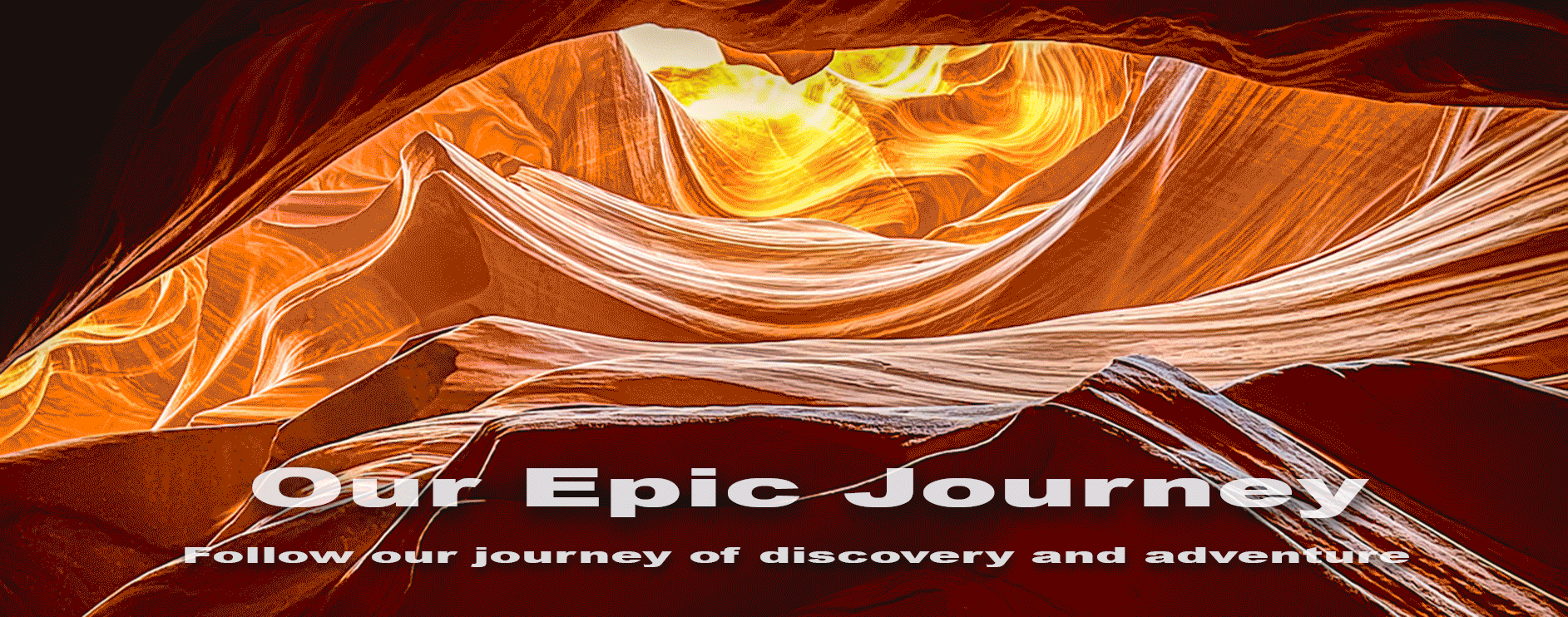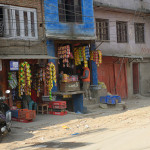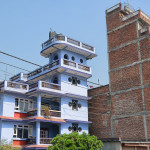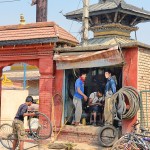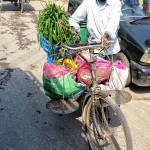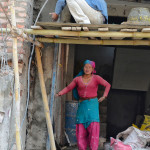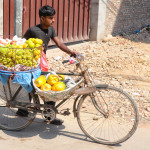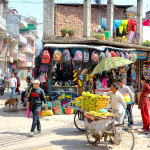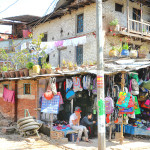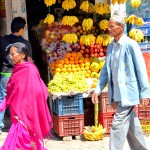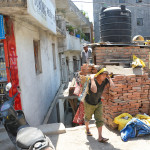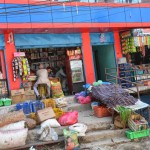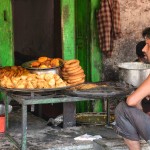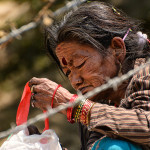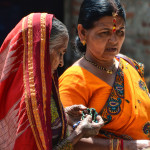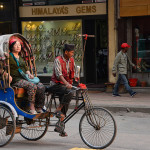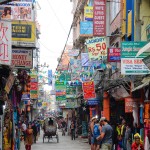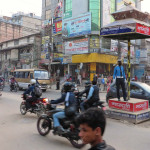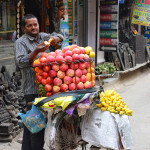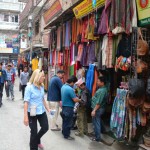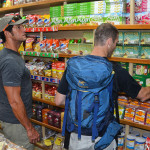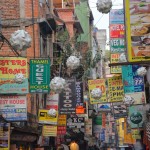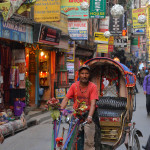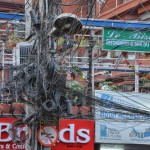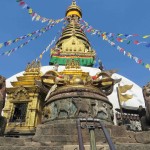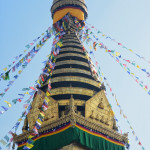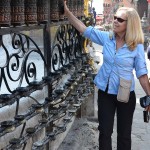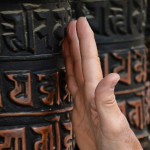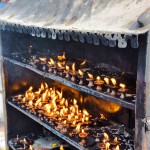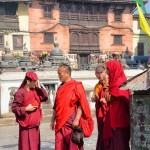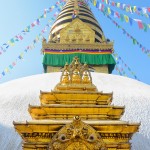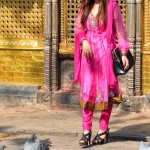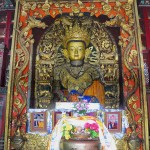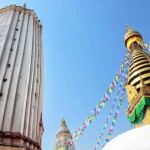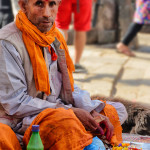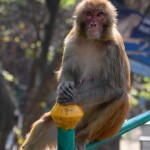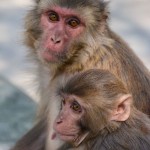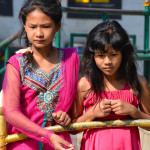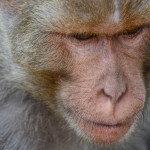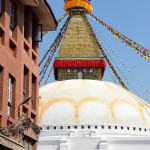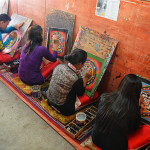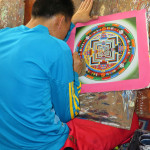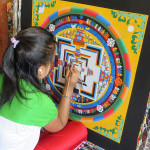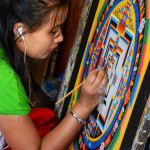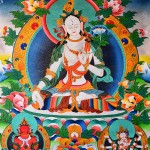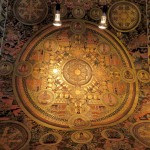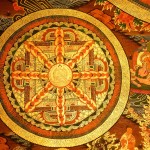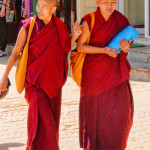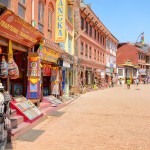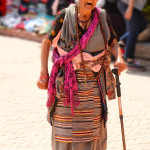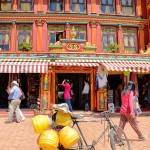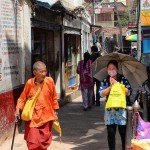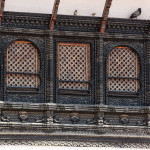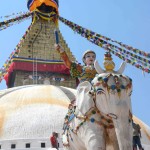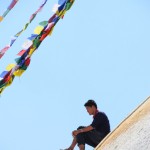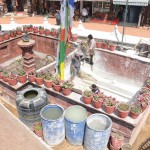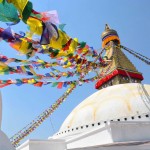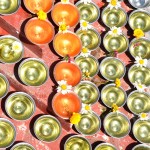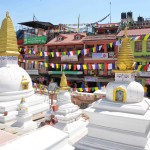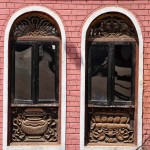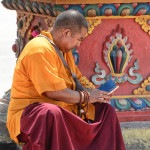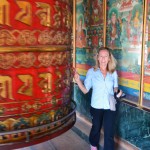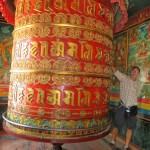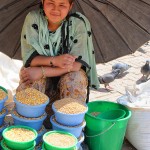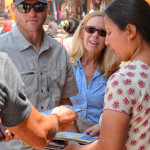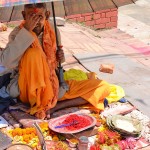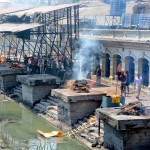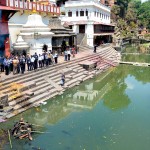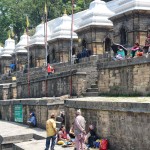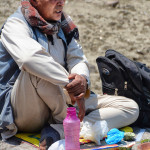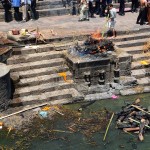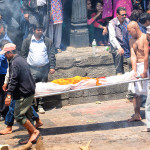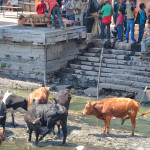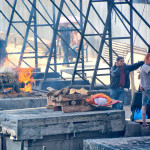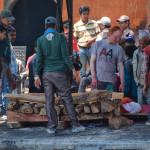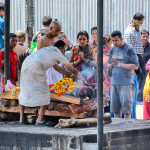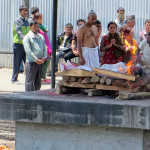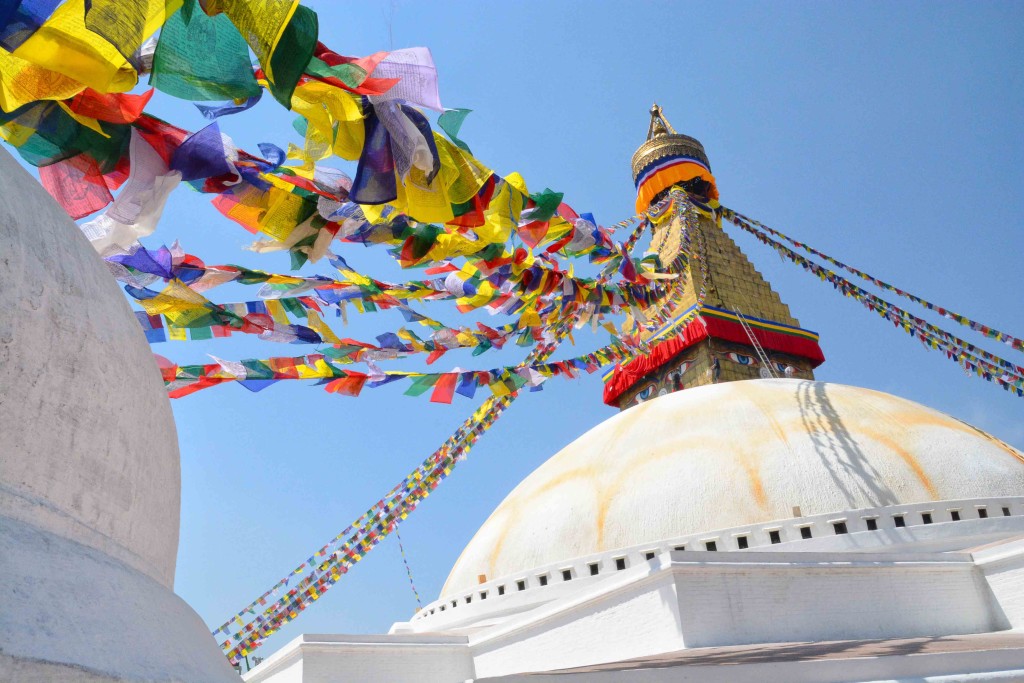Kathmandu is the capitol and largest urban agglomerate of Nepal. Kathmandu metropolis alone has 5.2 million inhabitants. The streets were crowded with bikers, autos, buses and pedestrians hurrying to-n-fro in all directions. The city stands at an elevation of approximately 4,600 ft. in the bowl shaped Kathmandu Valley of central Nepal. Kathmandu is the gateway to the tourism in Nepal, and it’s economy is focused on tourism, sometimes called the ” third religion” of Nepal. The city has a rich history spanning nearly 2000 years. Religious and cultural festivities form a major part of the lives of the people residing in Kathmandu, most of the people follow Hinduism and many Buddhism.
A quick tour of Kathmandu:
Trip to the Monkey Temple:
On our second day in Kathmandu we had a tour of the city and visited many of the famous religious temples. Swayambhunath, also known as the Monkey Temple, as there are holy monkeys in parts of the temple. The Swayambhunath complex consists of a stupa, and a variety of shrines and temples. The round white dome of the stupa looks like a full solid skirt, at the top of which are two giant Buddha eyes wisely looking out over the peaceful valley in all four directions. The eyes represent wisdom and compassion and cosmic rays emanate from the third eye in the middle. The thirteen tiers above the eyes symbolize the 13 stages of spiritual realization to reach enlightenment or Buddhahood. We walked passed many prayer wheels as we spun the wheels giving blessings to our trek up Mt Everest.
Each morning before dawn hundreds of Buddhists and Hindu pilgrims ascend the 365 steps ( which Kevin and Brad ran down and up for exercise) from the east side passing the gilded Vajra and two lions guarding the entrance, to begin a series of clockwise circumambulations of the stupa.
Trip to Boudhanath Stupa
Then it was on to the Boudhanath Stupa, home of one of the largest Buddhist stupas in the world built during the 15th century AD. For centuries Boudhanath has been an important place of pilgrimage and meditation for Tibetan Buddhists and local Nepalese. It is located on what was a major trade route between Nepal and Tibet and used it as a resting place. Many maroon clad Tibetan Buddhist monks can be seen walking around Boudha, repeating the mantra “Om Mani Padme Hum”, a Tibetan incantation seeking enlightenment. We were taken into a small art studio where the young were learning the painting of the Mandala. The Mandala is a spiritual and ritual symbol in Hinduism and Buddhism, representing the Universe. The colors were all natural dyes and painted on the canvas with a very fine brush. We were able to purchase some of the Mandala paintings, and Brad was fortunate to buy one. Boudha is a fascinating and very spiritual area. The culture is very much Himalayan with a strong presence of Tibetans and Sherpas, evidenced by the number of restaurants selling ‘momos’, ‘thukpa’ and other Tibetan favorites.
Trip to Pashupatinath
Next stop was Pashupatinath, Nepal’s most renowned Hindu cremation site, located on the banks of Bagmati River. It is one of the most famous Hindu temples in Nepal and the most famous Shiva temple in Asia. In Hindu culture, after the person is dead, the body is wrapped in cloth and placed on a bamboo litter, the body is delivered by barefoot pallbearers accompanied by the male relatives. The eldest son from the family performs the cremation ceremony and the dead body is burnt. A few hours later the ashes are collected and swept in the Bagmati River which will join the Holy Ganges eventually. We were able to witness several cremations from across the River.
Prayer Flags
We saw so many prayer flags in all the places we visited that I just have to explain the cultural significance of these important colorful flags. The prayer flags come in sets of five; one in each of the five colors. The five colors are arranged from left to right in a specific order, they represent the elements and the Five Pure Lights. The order is: blue symbolizes the sky and space, white symbolizes the air and wind, red symbolizes fire, green symbolizes water and yellow symbolizes earth.
Traditionally, prayer flags are used to promote peace, compassion, strength and wisdom. The flags do not carry prayers to the gods, which is a common misconception; rather, the Tibetans believe the prayers and mantras written on the flags will be blown by the wind to spread the good will and compassion into all pervading space. Prayer flags are thought to bring benefit to all. As wind passes over the surface of the flags, which are sensitive to the slightest movement of the wind, the air is purified and sanctified by the mantras. The prayers of the flags become a permanent part of the universe as the images fade from exposure to the elements. Just as life moves on and is replaced by life, Tibetans renew their hopes for the world by continually mounting new flags alongside the old. This act symbolizes a welcoming of life’s changes and an acknowledgement that all beings are part of a greater ongoing cycle.
Thamel
We returned to the Yak&Yeti for another great meal and a rest. In the afternoon Sapan took us to the neighborhood of Thamel. It is Kathmandu’s primary “traveler’s ghetto”, packed with guest houses, restaurants, shops and bookstores catering to tourists. Kevin and Brad did some last minute shopping for their trek up Mt Everest. We plan on returning to Thamel on our final visit to Kathmandu after completing our hike to Everest Base Camp.
